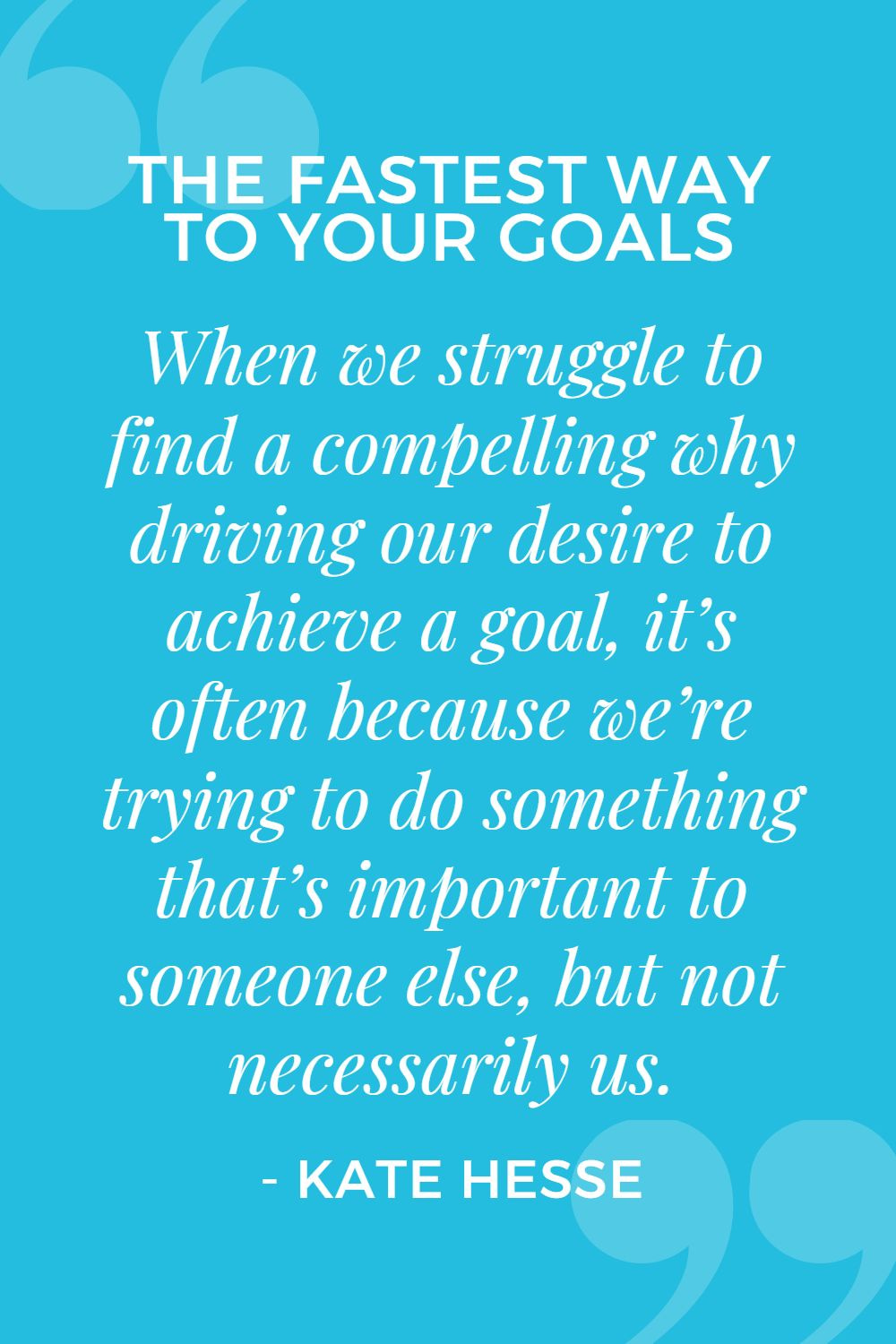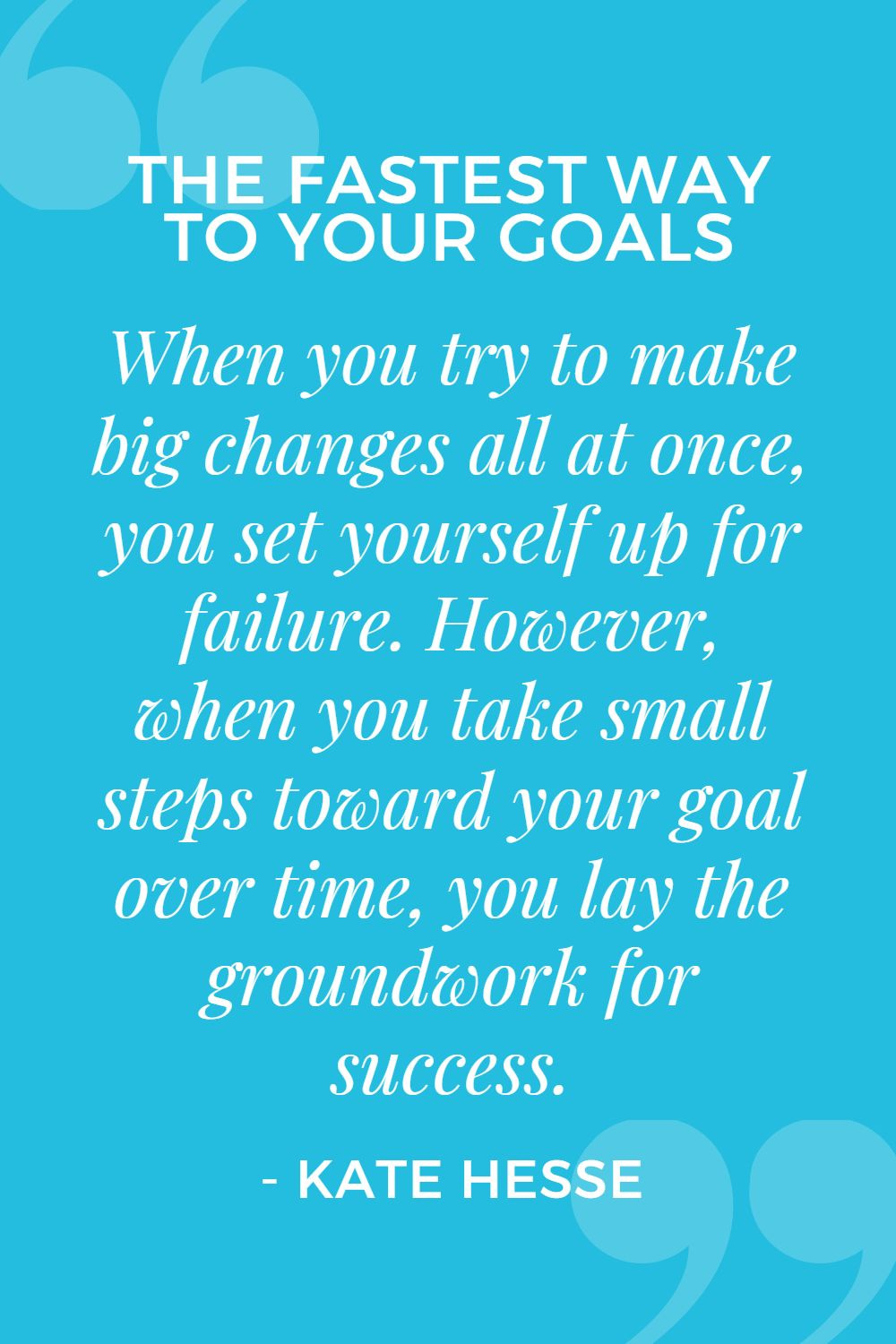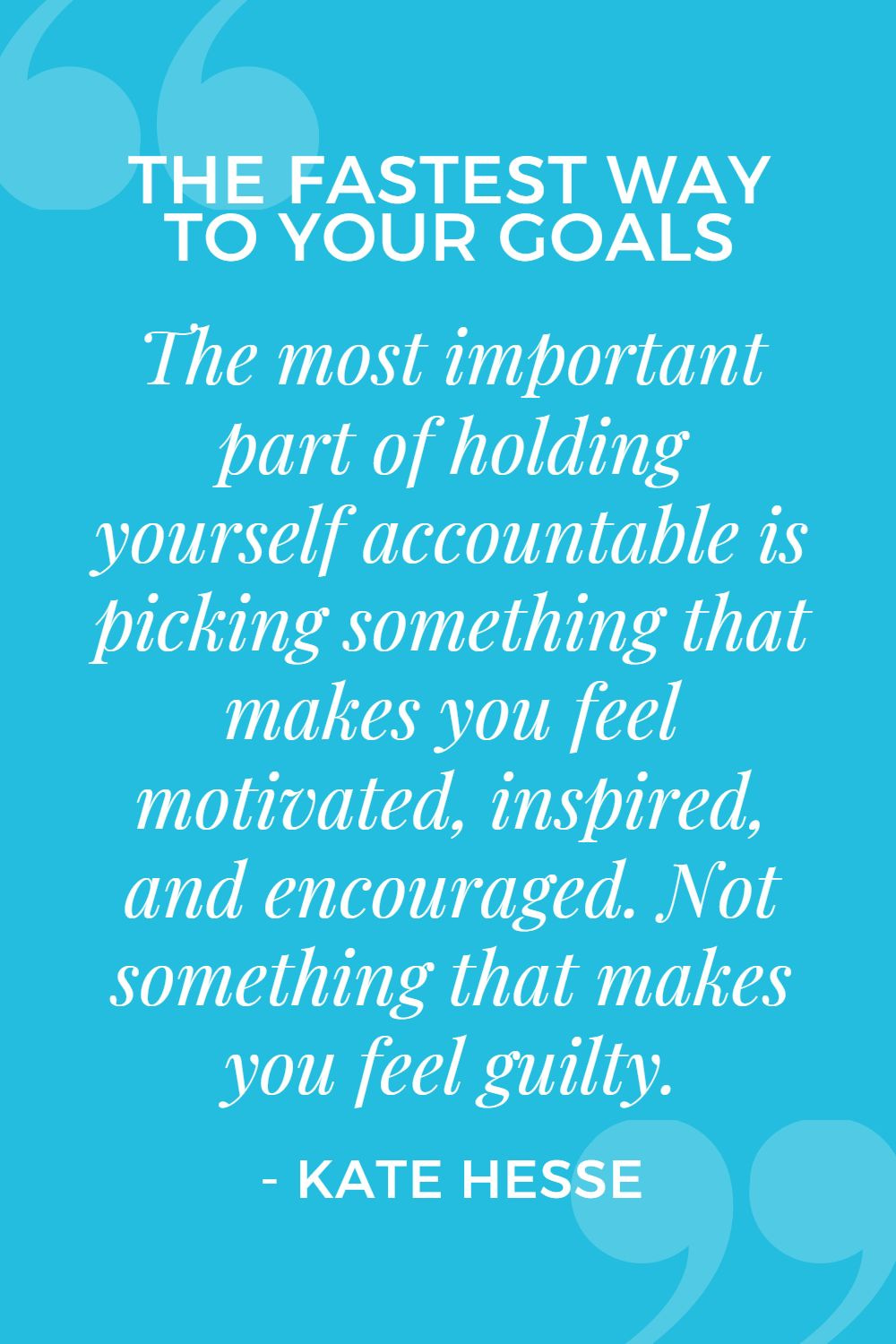
So much in life is available at the touch of a button or swipe of a finger. It’s totally understandable in this world of instant gratification that we’re looking for the fastest way to reach our goals. Because let’s be honest, for anyone who’s set a goal – or maybe New Year’s Resolution – and seen it fall be the wayside hours, days, or weeks later – change isn’t always easy.
In order to change our habits we need to make conscious choices to act, think, and allocate our resources in a different way. And for a number of reasons that can be hard.
Maybe you’ve heard the story of the dog and the nail. There are a number of version of it out there, but they all have the same ending.
A person walks down the street, they stop to talk with a friend. The friend has a dog sitting on the ground next to them. As they talk, the dog lets out a whine. The person asks why the dog is whining, and the friend responds – “she’s sitting on a nail”. When asked why the dog doesn’t just get up, the friend answers – “it doesn’t hurt enough yet.”
Fear keeps us stuck
Often the fear of the unknown – and that includes change – can be enough to keep us stuck – even if we know the situation we’re in isn’t one we want to continue to be in.
Physiologically when this happens our amygdala – the fear center of our brains – is focused on keeping us safe. Unfortunately, technology and the way we live has evolved much quicker than our brains. And so our amygdala is still functioning from a paradigm where at any moment you might be attacked by a bear or a lion.
It views the unknown in our lives with the same level of risk as jumping into the polar bear enclosure at your local zoo. If you want to learn more about the fear response in the body, this blog post has lots more information.
With that in mind, the first step in reaching a goal is to recognize you may need to make some mindset shifts to overcome the barrier of fear which is keeping you inert. Now would be a great time to download the worksheet for this episode – you can get it with this form:
Setting your goals
Ok, your first step is to write down your goal.
Identify your why
Next, a great place to get started with a mindset shift is to focus on the why behind your goal.
For instance, we don’t usually want to lose weight just to see a lower number on the scale. You might want to lose weight so you’re able to live a long healthy life, maybe you want to keep up with your kids running around the playground, or perhaps you want to feel comfortable in your own skin. We don’t want to have a cleaner house because we want a cleaner house, maybe you want it because it helps you feel more comfortable and relaxed in your home.
Identify the why behind the goal you’ve set and add that to the worksheet.
How strong is your why?
Now ask yourself – does the why feel like something that will overpower your resistance to change? For instance – if your goal is to get in shape, is your why strong enough to get you out of bed 30 minutes early each day to exercise before starting your day? Be really honest with yourself – if it doesn’t feel compelling enough, dive back in – is there another why that you feel more compelled by?
 If you can’t identify a why that’s strong enough to overcome your discomfort in taking your first steps toward your goal, take a few minutes and consider if the goal is actually in alignment with what’s truly important to you.
If you can’t identify a why that’s strong enough to overcome your discomfort in taking your first steps toward your goal, take a few minutes and consider if the goal is actually in alignment with what’s truly important to you.
What’s truly important to you?
Check out these posts on Core Values and Radical Self-Honesty to help you identify what’s truly important to you. And stay tuned for next weeks episode where I’ll do a deeper dive into clarifying what really matters to you.
For now, I’ll just note that when we struggle to find a compelling why, it’s often because we’re trying to do something that’s important to someone else, but not necessarily us.
The path to your goal
Ok, so now that you’ve set a goal which is outside your comfort zone, and identified your why, you have two paths you can take – the giant leap approach, or the little steps technique.
Imagine you read somewhere that people who wake up and exercise at 6 am are more productive throughout the day. You decide this is your goal. And you’re able to come up with compelling reason why you want to be more productive during the day – maybe it will give you more quality time with your family in the evenings and on weekends.
However, in this hypothetical, let’s assume currently you never get out of bed before 8 am.
The giant leap approach
Let’s start with the giant leap approach. You set your alarm for 6 am the next morning but hit snooze a dozen times before you finally get out of bed at 7:30. It’s way too late for the workout you’d planned so you skip it and decide you’ll start tomorrow. You do this a few more days in a row before deciding this goal just isn’t for you and you give up.

The small steps approach
Now let’s look at the same goal with the little steps technique. You find a workout on YouTube you want to try, it only takes 10 minutes. You climb into bed 15 minutes earlier than normal, and set your alarm for 7:45 am (that’s also 15 minutes earlier than normal). The next morning you wake up with your alarm, do the quick 10 minute exercise and get on with your day. You repeat this pattern for a week.
The next week you find a 20 minute video to try. You go to bed 10 minutes earlier and wake up 10 minutes earlier. You keep going like this, adding 10 minutes every week until you’re awake and working out at 6 am!
When you try to make big changes all at once, you set yourself up for failure. However, when you take small steps toward your goal over time, you lay the groundwork for success. We all remember the story of the tortoise and the hare, but how often do we remember to apply the moral of slow and steady wins the race to our lives?
So the next step on your worksheet is to break your goal into steps.
What feels doable and manageable for you to accomplish starting tomorrow? Does it feel sustainable for a week or two? What would the next step be? Write out a chain of steps that will get you from where you are to where you want to be. Once each step feels routine, move onto the next step. I’d suggest starting with at least one to two weeks of each step before adding the next in.
There are two more steps consider when reaching your goals.
Removing barriers to achieving your goals
I used to sleep in my yoga clothes so I could just roll out of bed, brush my teeth and go right to my favorite yoga class – which happened to be early Sunday morning. Removing the barrier of getting out of my cozy pj’s to get into yoga clothes was enough to ensure I made it most days.
Maybe for you this means keeping a packed gym bag in your car, having all the supplies you need to clean the house on hand and easily accessible, moving your alarm clock across the room so you need to get out of bed to turn it off, or having healthy groceries delivered each week so you know you have the ingredients to make nutritious meals.
Whatever your goal, identify the biggest sticking points and find ways to remove those barriers and make it easier to take each step.
Holding yourself accountable
 This is a great place to know what motivates you.
This is a great place to know what motivates you.
Maybe it’s simply putting a post-it with the step, your goal, or your why on the bathroom mirror, fridge, or computer monitor – somewhere you’ll see it regularly.
Perhaps you share your goal and each step as you work through them with a trusted friend or family member who can cheerlead you along the way and help you hold yourself accountable.
Maybe you set milestone rewards for yourself – something to motivate you to make each step a habit and move onto the next one.
It might work for you to take your goal worksheet and keep it on your desk, your nightstand, or some other place you can regularly be reminded of your commitment to yourself.
The most important part of holding yourself accountable is you pick something that makes you feel motivated, inspired, and encouraged. If your accountability brings up feelings of guilt, it’s time to consider something else.
Give yourself the gift of grace
We’re all human, and as humans, we aren’t perfect. That means that some days you won’t implement your new habit. Sometimes things come up and you might slide back a few steps and have to reestablish habits. The best way to overcome these challenges is to first give yourself grace.
I love the saying from addiction recovery that I think applies equally well to habit formation – we’re always one step away from falling off the path and one step away from getting back on it.
If you let your habit slip, take a deep breath. Recognize that it’s normal and natural and part of the human experience to not do everything perfectly. Then reevaluate where you are – do you need to simply recommit to the step you’re on? Do you need to roll back a few steps and rebuild your momentum? Do you need to revisit your goal or your why and adjust them to reflect your current life and priorities?
Remember – the point of a goal is to help you move away from something that isn’t working for you and toward something that is. If a goal isn’t working for you, it’s time to make some changes to it!
I’d love to know what’s one goal you set for yourself in the past but failed to reach because you tried the giant leap approach? And what’s one little step you can take starting today to reach that goal?
You can always connect with me here!
Thank you so much for joining me today for this episode! Please hit subscribe wherever you receive podcasts. If you’ve got a question you’d love to hear addressed on a future episode, please submit it using the form here.
And remember – living your best life isn’t about changing your life – it’s about changing the way you show up for your life! I’m sending you a great big hug – you’ve got this!
Show Notes
Learn more about your Nervous System and the physiological response to stress.
Exercises to help you identify what’s truly important to you:
Submit your question to be featured on a future episode.
Related
2 thoughts on “The fastest way to reach your goals”
Leave a Reply Cancel reply
This site uses Akismet to reduce spam. Learn how your comment data is processed.
[…] The third issue with my resolutions was I never bothered to think about why they were important. I talked about finding your why in the last episode. […]
[…] great example of self-work is the goal setting and year end review process in Episode 2 and Episode 3 of the podcast. These are things that are super important to living your best life, […]